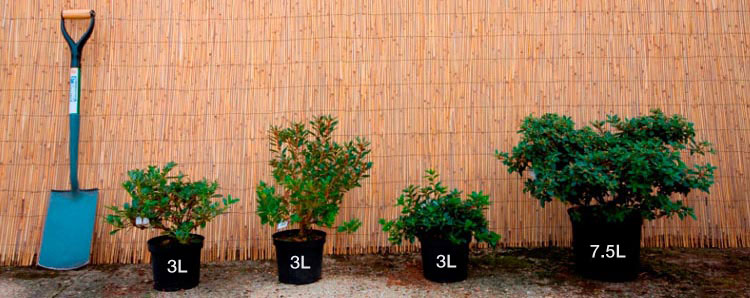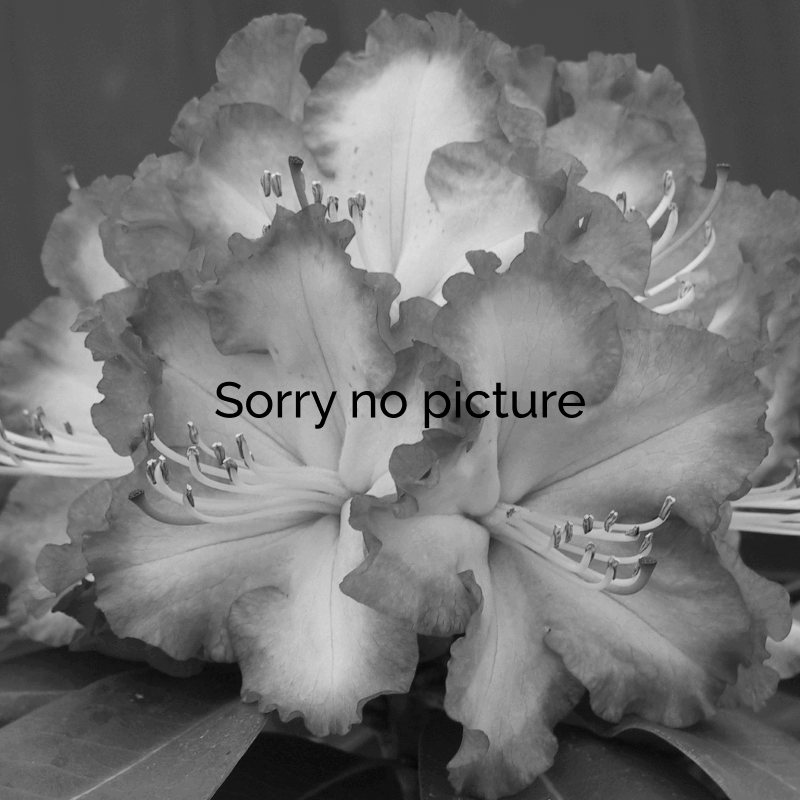Cornus Ruth Ellen AGM
Item: CORUTH
 Currently Unavailable
Currently Unavailable
April-May
White & Cream
200-400cm
Not Scented
Yes
To -15 °C
Collect in Store
This item is available for collection.
Home Delivery
UK mainland delivery from £8.95
(H5) Cornus x rutgeriensis 'Ruth Ellen' is a hybrid flowering dogwood, a cross between Cornus florida, found in South-eastern United States, and Cornus kousa, from China. It was developed as one of the 'Stellar' dogwoods bred at Rutgers University in New Jersey.
It is vigorous and will form a large shrub, or small tree in time, the rate of growth being determined by soil fertility and the availability of moisture. Eventual height is likely to be in the range of 4-6m, and generally wider than it is tall, so plant with plenty of room for future growth.
'Ruth Ellen' produces exceptionally numerous large-bracted flowers from a young age during April to May, the bracts being pure white whilst the true flowers being insignificant and yellowish-green. Ruth Ellen is also sterile so will not produce fruit, but on the other hand will put a lovely display of autumn colours, as the leaves turn to rich tones of plum purple.
Good to know
We offer a range of our favourite plants which associate well with rhododendrons. They all like similar growing conditions – moist acidic soil and dappled shade. Some of these are featured in our garden at Crosswater Farm, and often create plenty of interest and enquiries. Many are fairly rare and are unavailable elsewhere, but deserve to be better known.
All require good moist acidic soil with a high organic content, planted with good ericaceous compost. For a guide to plant spacing, use the height we give in 10 years as a guide to the distance between each plant. Plant no deeper than the top of the rootball, and dig in plenty of good ericaceous compost around the sides. A teaspoon of slow release feed is sufficient for a 3 litre plant, rising to a small handful for a mature plant.
For further advice, For further advice, see here
The Basics
Ideal soil
Acidic soil, good organic content, pH 4.5-6.0. Inkarho range of rhododendrons will tolerate soils up to pH7.5
Sun or Shade
Light dappled shade is best for most varieties.
Shelter
Refer to hardiness rating. Give young plants protection.
Site Selection
Avoid close to trees, roots, invasive weeds, walls, hot patios, dry banks and waterlogged soils. Do not use weed matting or stone mulch.
Plant spacing
Use the height shown in 10 years as a guide to the distance between each plant. Allow room for plant to fill out. If planting closer for instant impact, be prepared to move plants after a few years.
Compost
- 3 litre pot, dig in 10-20 litres of ericaceous compost.
- 7.5 litre pot, dig in 20-30 litres of ericaceous compost.
- 70-80cm specimen, dig in 60 litres of ericaceous compost.
- 100-120cm specimen, dig in 120 litres of ericaceous compost.
Planting depth
Plant high in the ground, with the top of the rootball visible.
Feeding
Slow-release ericaceous feed recommended in March and straight after flowering.
Mulch
Recommended every few years.
Water
The key ingredient! Keep moist all season, especially the critical time at end of June for flower bud initiation. Tap water is better than no water. Heavy dose at least once per week in dry weather.
Drainage
Ensure good drainage in winter, especially with yellow flowering varieties. Avoid waterlogged sites.
Pruning
Rhododendrons and Camellias: Not normally required. Tidy wayward shoots after flowering.
Evergreen azaleas and Bloombux can be clipped into a low hedge.
Magnolias and Acers: Formative pruning when young to shape into a tree or bush.
Deadheading
Remove old flower-heads, particularly on young or weak plants.
For further advice see here
Size Guide

Delivery & Returns
Our website calculates the delivery charge according to weight and delivery location throughout the UK. To see these charges, please enter your postcode at the checkout, and you will see the charge vary as you add more items to your wheelbarrow.
 Millais Nurseries
Millais Nurseries




